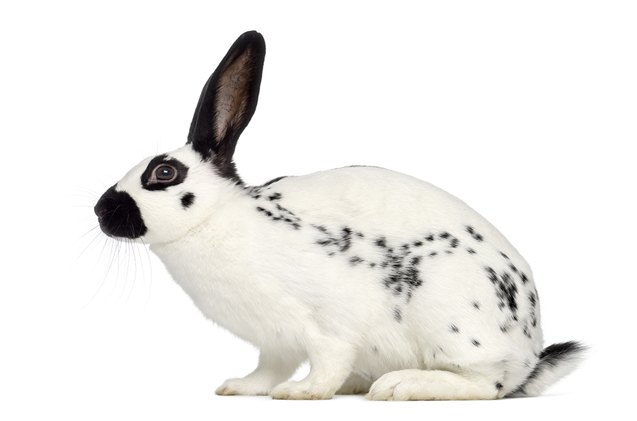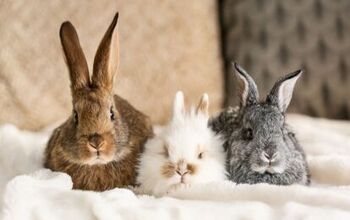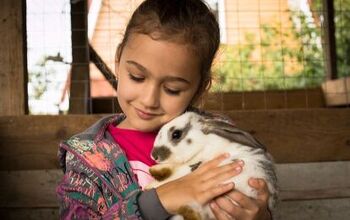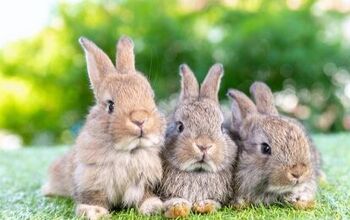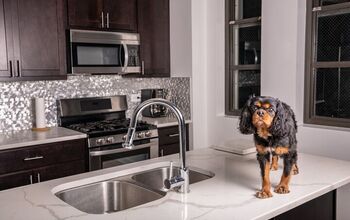English Spot Rabbit


About English Spot Rabbit
The English Spot Rabbit is one of the oldest rabbit breeds, dating back to the mid-19th century. The main purpose for developing this particular breed of rabbit was for show purposes, which back in those days, was uncommon since rabbits were mainly used for meat purposes. It is suggested that they may have come from the Great Lorrainese (now known as the Giant Papillon), although it is also said that they may have descended from the English Butterfly and/or the Checkered Giant.
In 1910, the English Spot Rabbit was imported to North America and 12 years later in 1924, the American Rabbit Breeders Association (ARBA) accepted it as a recognized breed, and subsequently, the American English Spot Rabbit Club was established.
The English Spot Rabbit wonderful choice for singles, couples, families and seniors.
The English Spot rabbit is medium-sized, weighing anywhere from 5-8 lbs. They have a full arch body shape, long slender legs and hind legs which are parallel to the body. They also have round hips and vertical ears.
English Spot Rabbits have short, dense flyback fur. Throughout the year, they may shed, but because the coat fibers are so short, you won’t notice it too much. Rather than forming clumps at the corner of your homes, it may get stuck in your clothing instead. In order to minimize the amount of fur in the home (especially during heavier shedding periods ), simply groom your rabbit with a slicker brush outdoors once every week or biweekly.
There are a few different colors recognized by the ARBA when it comes to English Spots. Black, blue, chocolate, gold, gray, lilac, and tortoise are all recognized, and all show-worthy English Spots have markings. This includes a nose marking that looks like a butterfly, eye circles, cheek spots, coloured ears, a random chain of spots along each side of its body and a strip of color down their back called a “herringbone”.
English Spots are gentle, affectionate and have just enough spunk to make them interesting companions.
The English Spot Rabbit needs an adequate enclosure to spend some of its time to eat, sleep and play. Outdoor enclosures should be raised and have enough space for the rabbit to stretch its legs out comfortably (which, considering this rabbit’s size, would require it to be rather large). Indoor rabbit enclosures should be made of wire all around, have a plastic or metal bottom and be large enough for the English Spot to stretch out. The bottom of the cages should be covered in rabbit-safe bedding and it needs to be spot-cleaned every day and completely replaced at the end of every week.
English Spots have a long history of being used as show rabbit rather than for their pelt, meat or as a pet. Because they are such docile, easy-going animals, they can be easily be a lovely house pet that will give you many years of happiness and memories. Indoor rabbits should have at least 1-2 hours minimum outside of their enclosures to stretch their legs and use up energy, as they are energetic bunnies. If you can keep them outside, be sure to let your rabbit roam in a fenced part of your yard.
In terms of food, this rabbit’s diet requires 70 percent hay. There are many different kinds of hay available for rabbits according to price point and nutritional value. The rest of their diet should be a balance of leafy greens, pellets, fruits and vegetables. Be wary of what kind of fruits or vegetables you have in your home, as some of them are not recommended to be given to rabbits. Some rabbit-safe vegetables include fennel, pumpkin, asparagus, cauliflower, cucumber, and watercress. Hay and fresh water should always be readily available for your rabbit.
The English Spot Rabbit is not particularly susceptible to any hereditary diseases, however there are some things you need to watch for. Overgrown teeth is by far one of the most popular problems rabbits face and it can be prevented with a well-balanced diet consisting mostly of hay. If your rabbit doesn’t seem to be eating, is less energetic and/or has less droppings than usual, their teeth may be growing into their face and/or jaw, causing a lot of pain. Should you suspect overgrown teeth, simply take them to your local veterinarian where they can correct the teeth and prescribe antibiotics for any infection.
Those caring for a rabbit should also check their ears periodically (biweekly) for any sign of ear mites, as it is also rather common, especially in outdoor rabbits. Flystrike is also another rabbit issue which occurs when flies lay their eggs in a rabbit’s soiled coat (usually on their bottom). Lack of appetite, lethargy and/or sudden yelps of agony can be signs of flystrike. Immediately take your rabbit to your local veterinarian if you believe it has flystrike, as it could be deadly.
The English Spot Rabbit may shed, but because its coat fibers are so short, you won’t notice it too much.
This well-mannered rabbit is a wonderful choice for singles, couples, families and seniors who are looking a low-maintenance pet. They are gentle, affectionate and have just enough energy and spunk to make them interesting companions. Because they have been bred to be used as show pets, they are very much used to being petted, held and handled overall by humans, which makes them great pets.
Unlike other pets such as dogs and cats, rabbits are a little bit trickier to litter train. With lots of time, patience and rewards, rabbits can be potty trained – it simply takes them longer to understand. Instead of using just one litter box, try to spread a couple around the house so they won’t be tempted to do it in a corner. With lots of patience, rewards and time, you can potty train your rabbit as well as teach them some other nifty tricks such as stay, come and jump!
Rabbits should be given a few toys to nibble on whether they are inside or outside so they don’t destroy any of your personal property. Whether your rabbit ignores the more complex, expensive toy or likes it is completely up to the rabbit, as they all have their own personalities and enjoy different toys. Find what your rabbit likes and stick with it!
Photo credit: Life on White/Bigstock

More by Diana Faria



